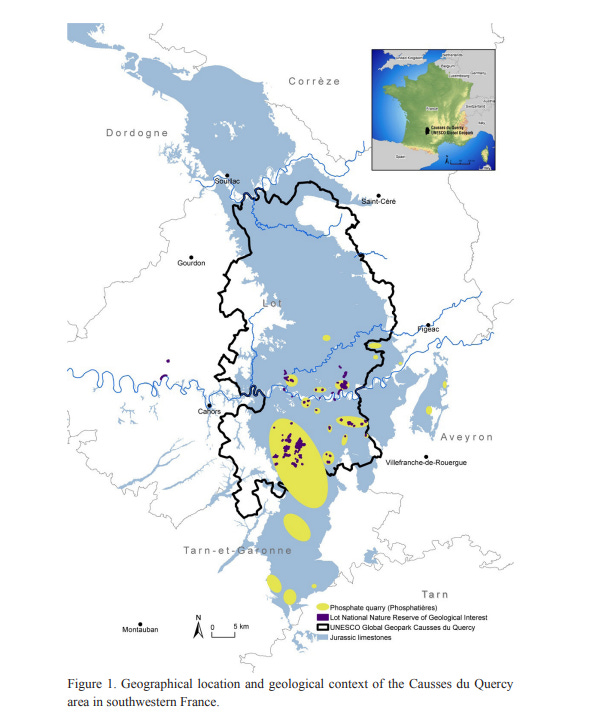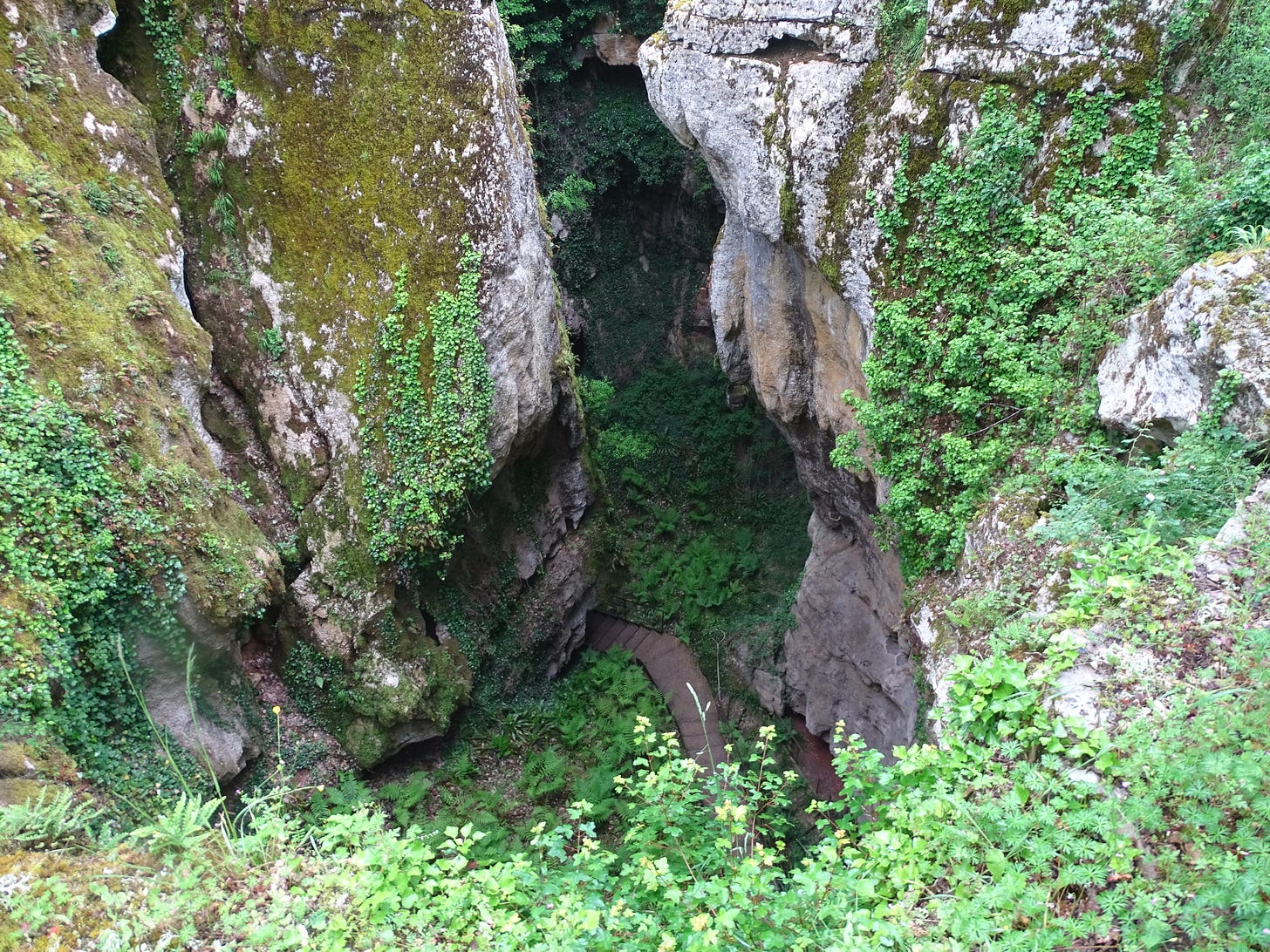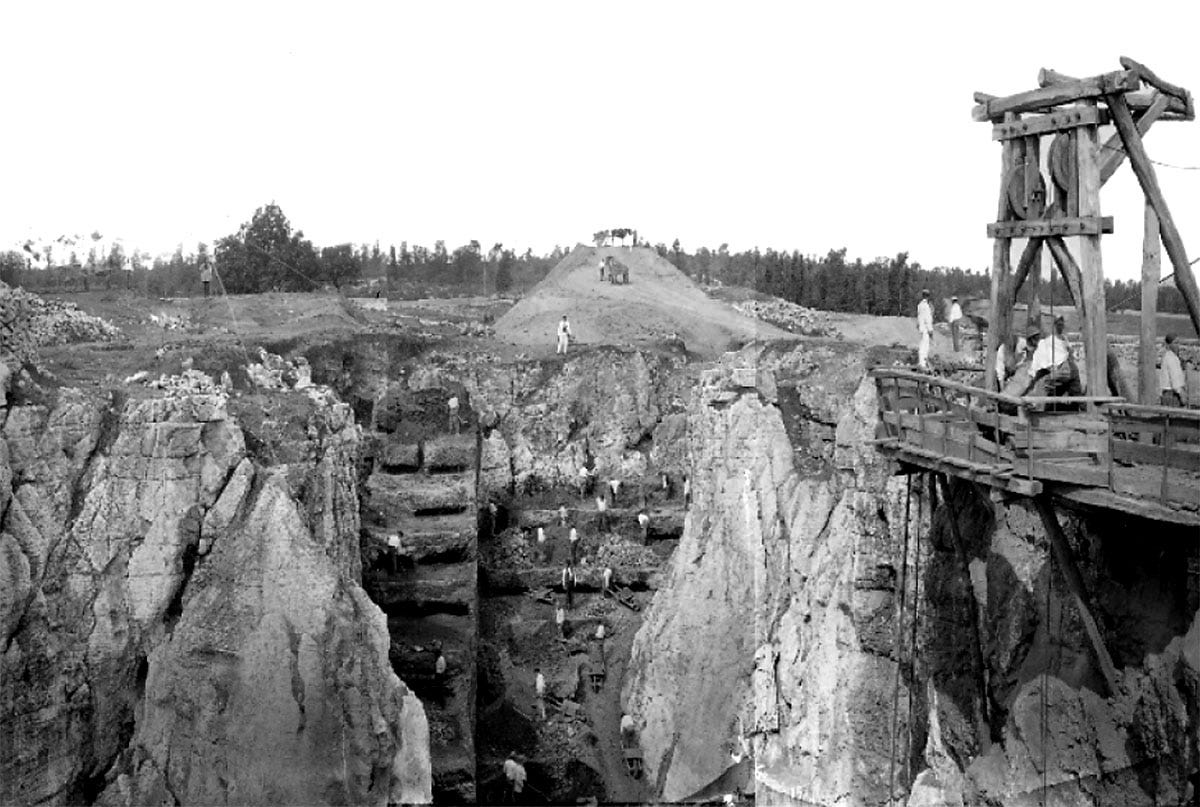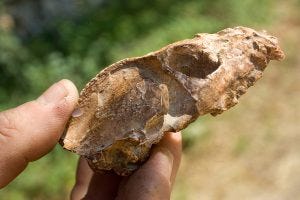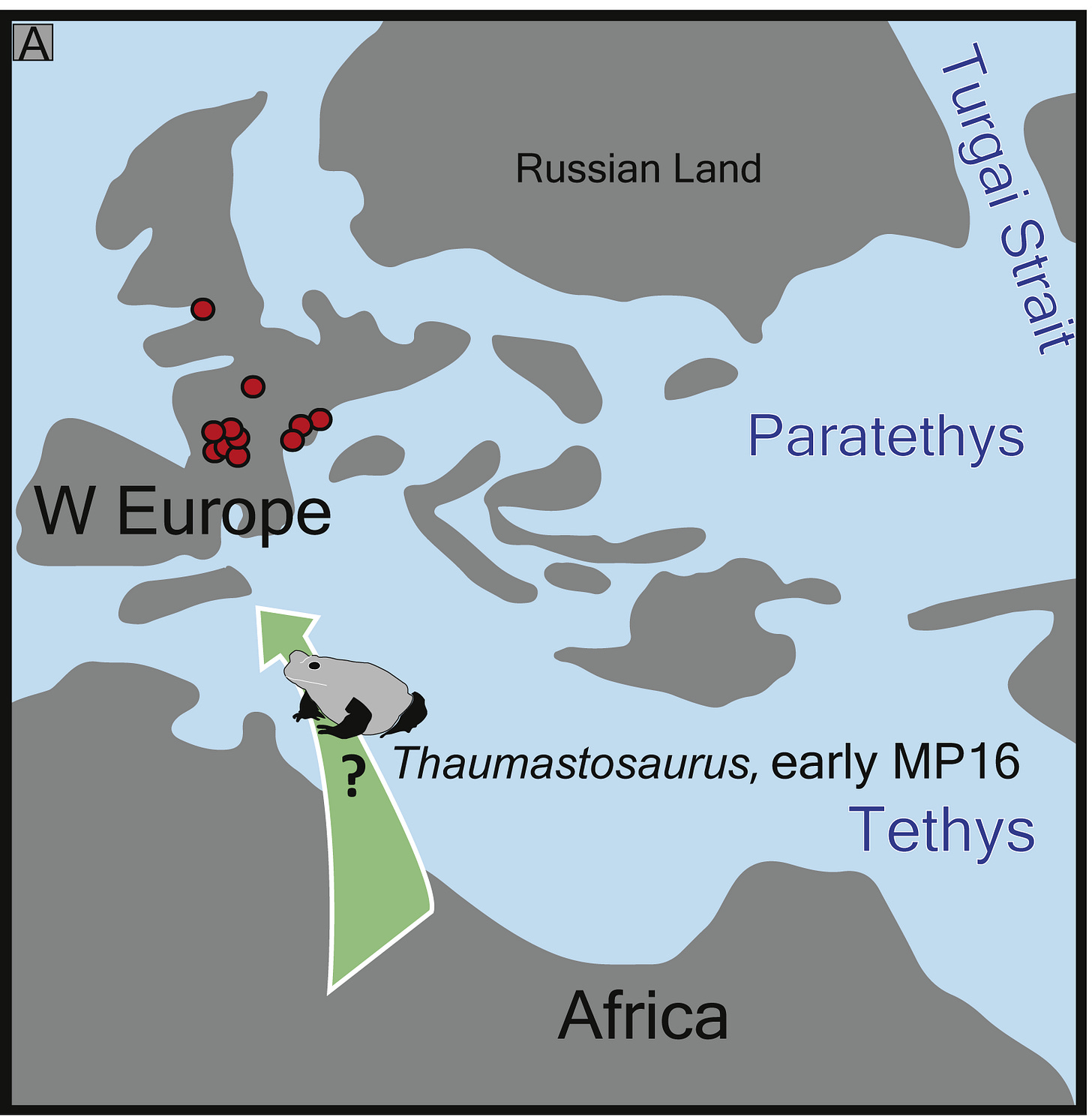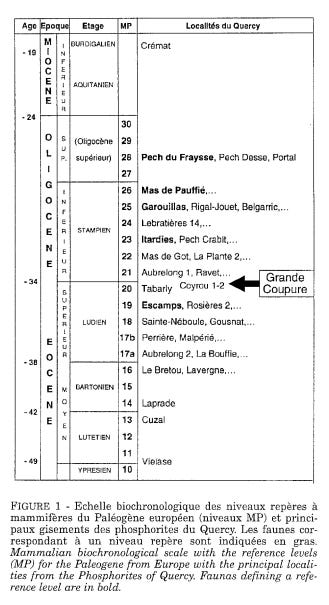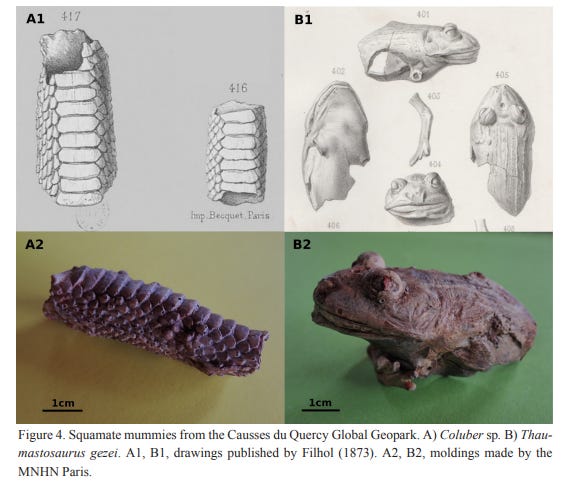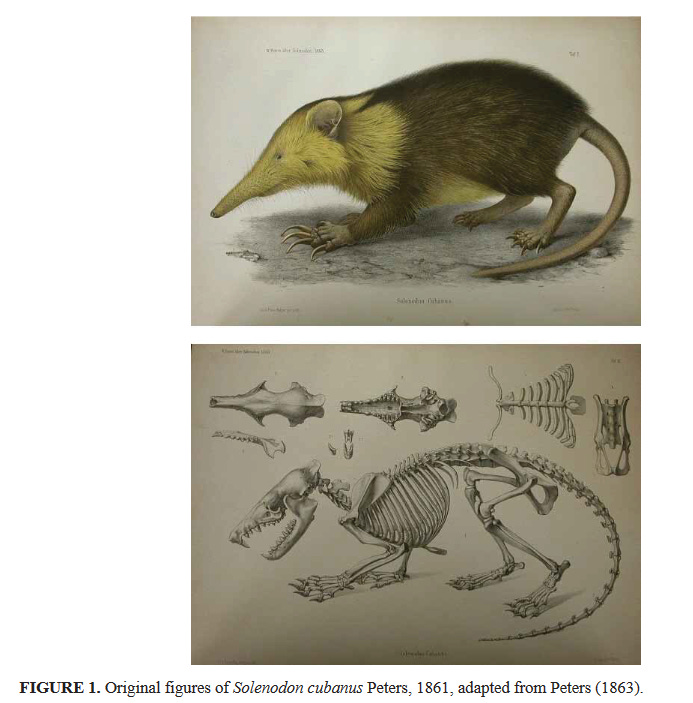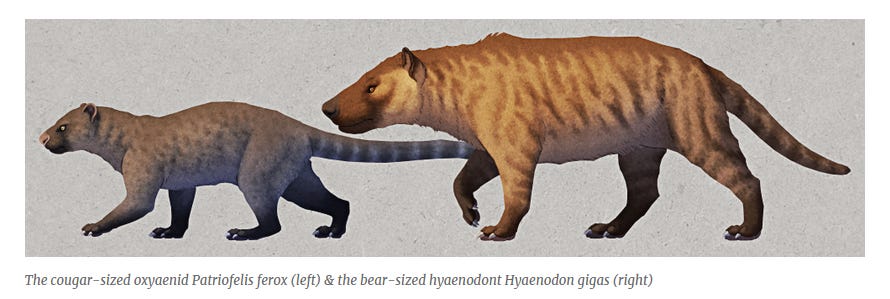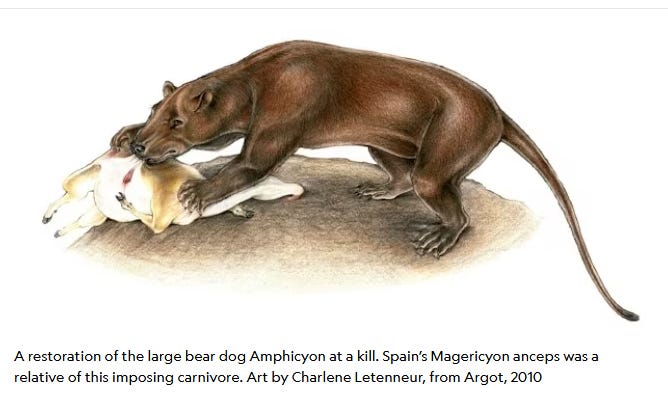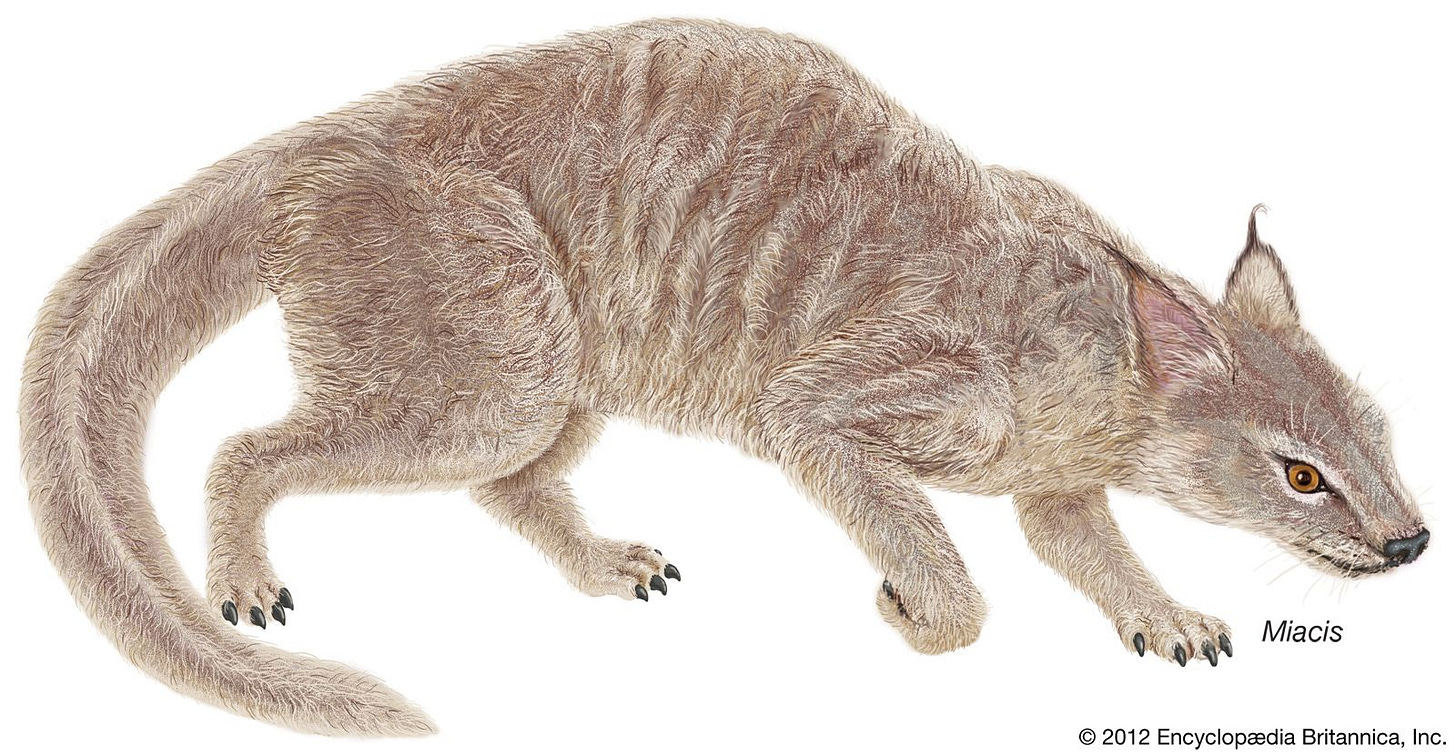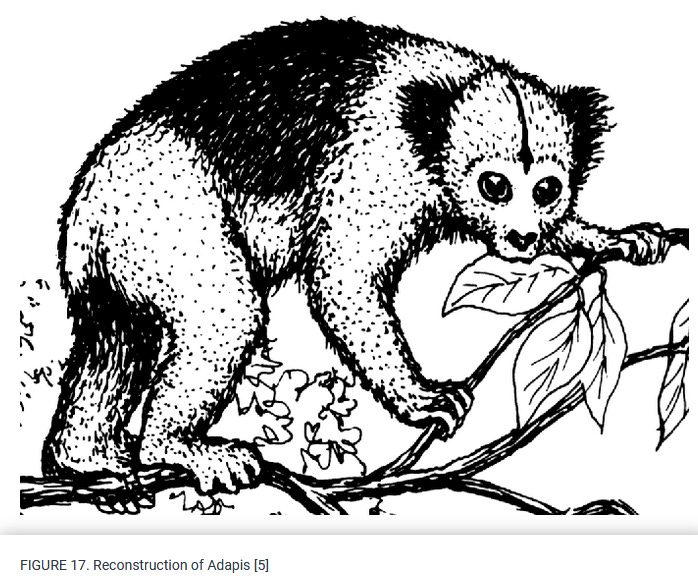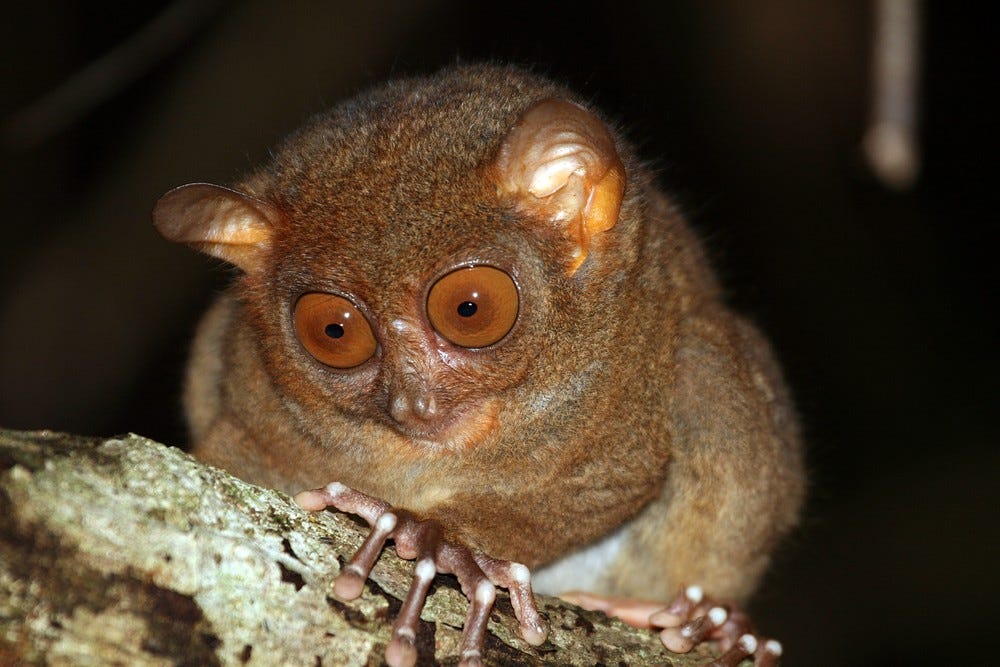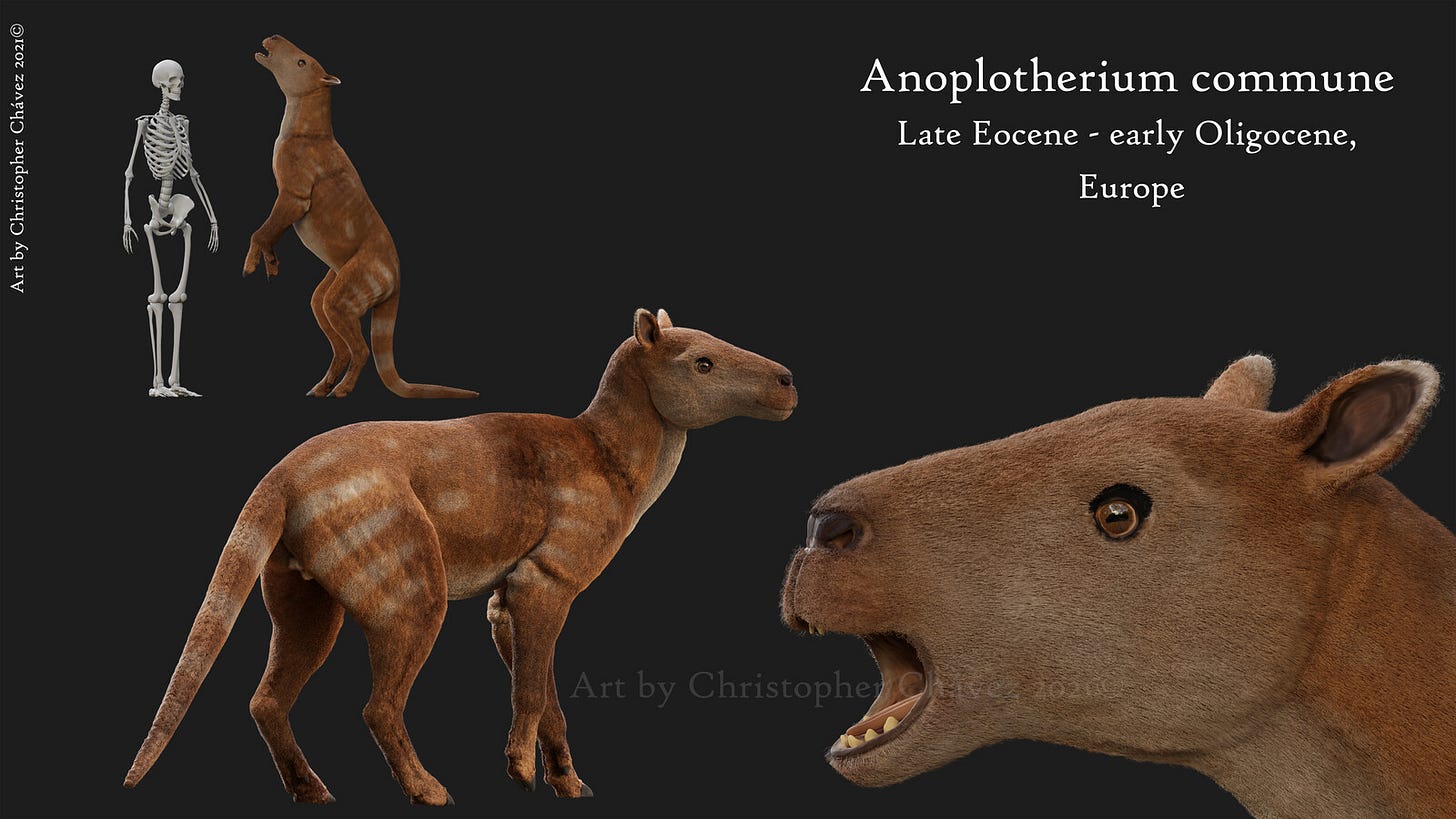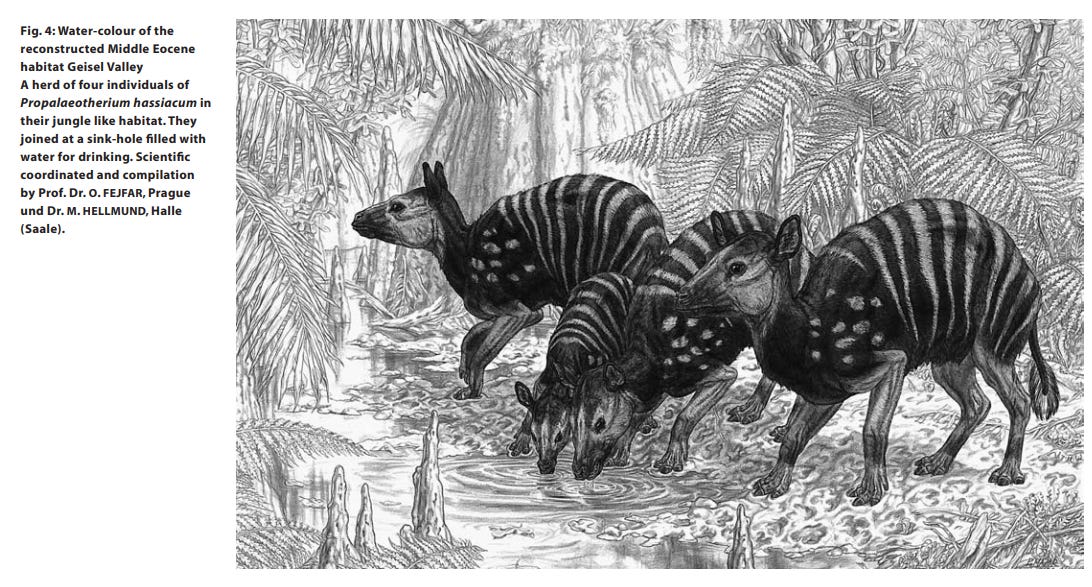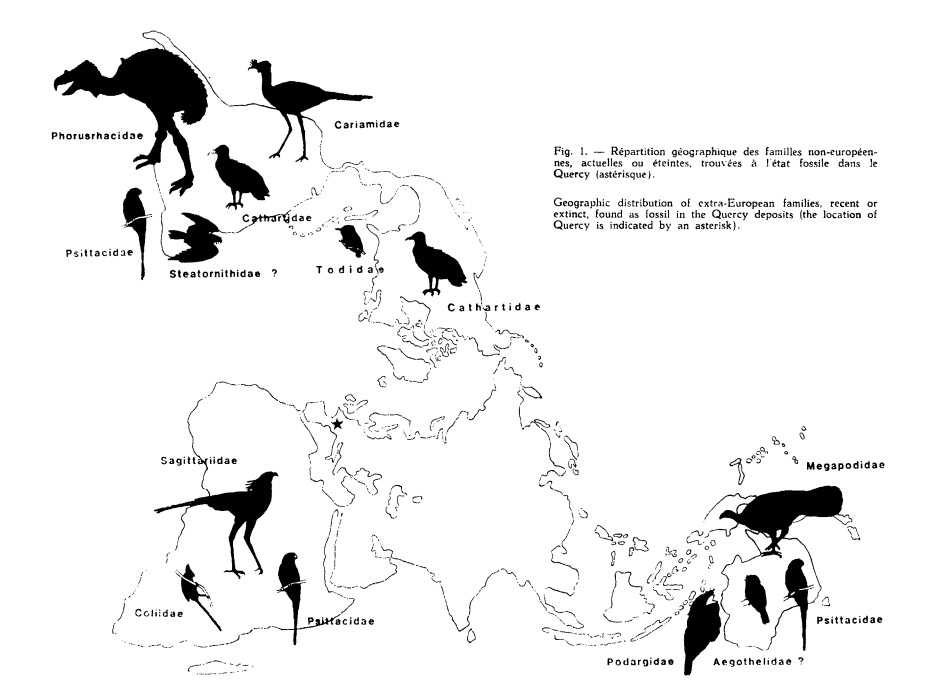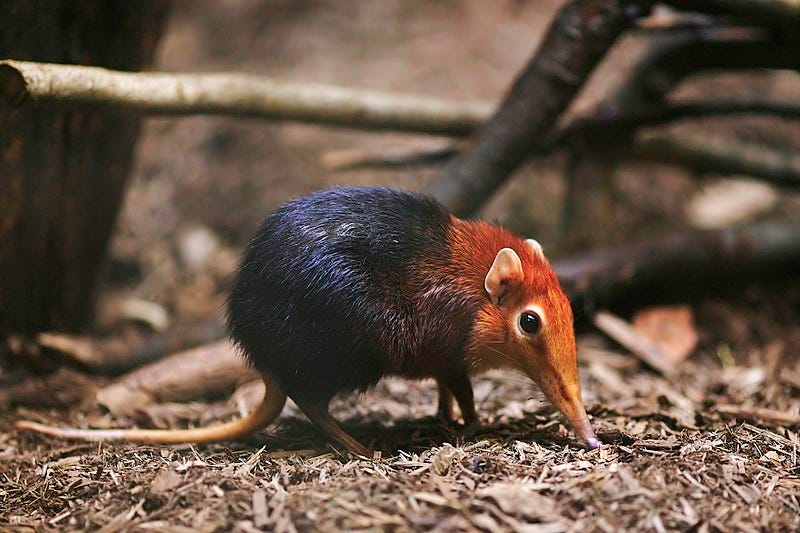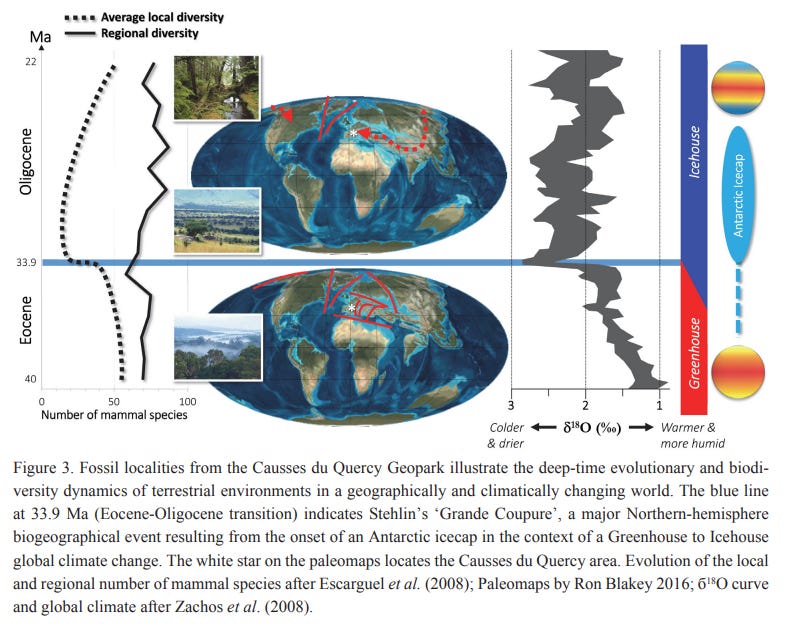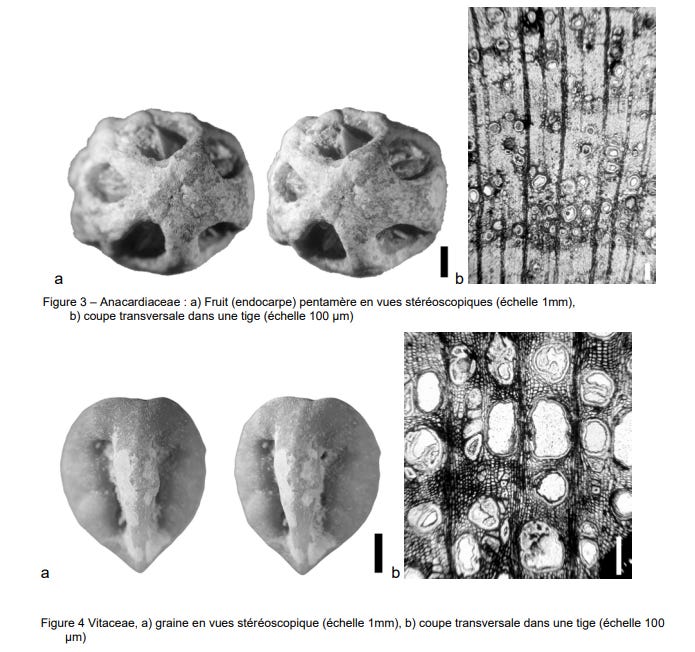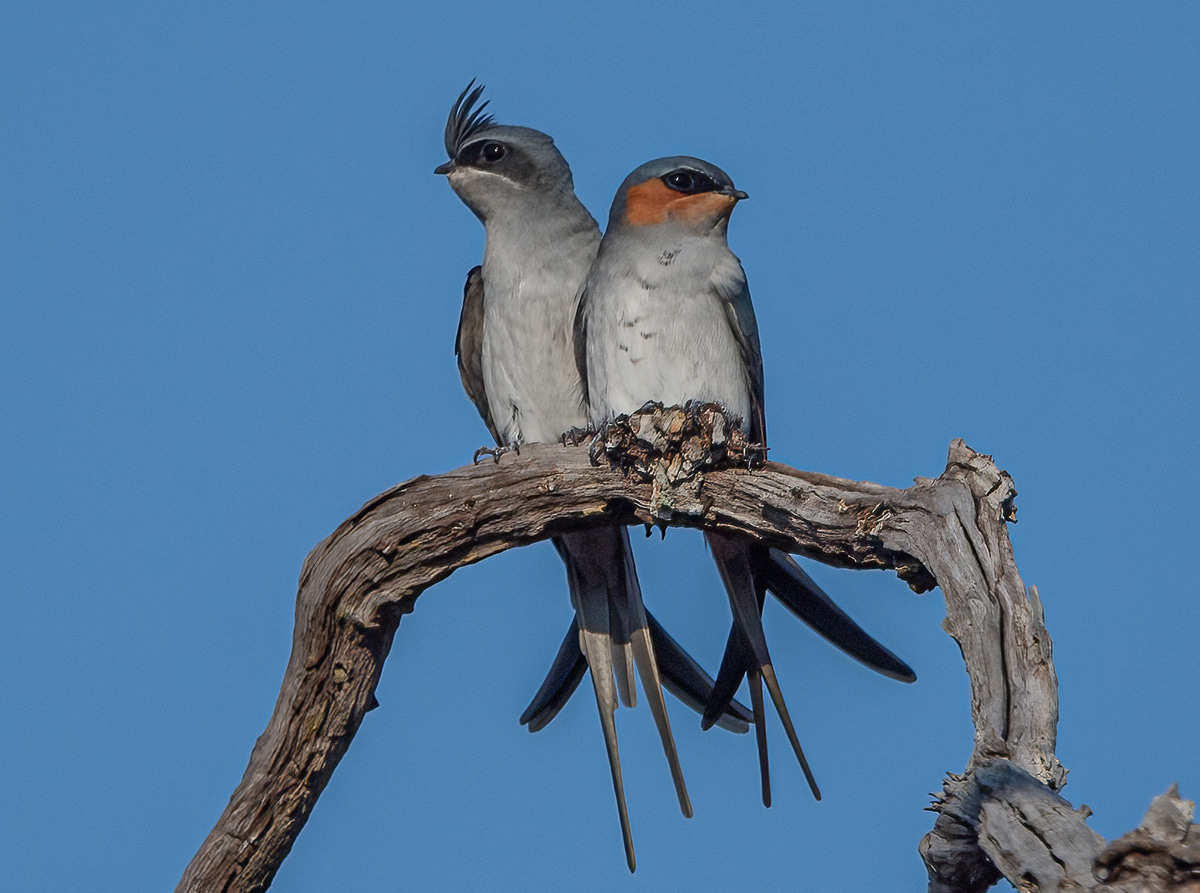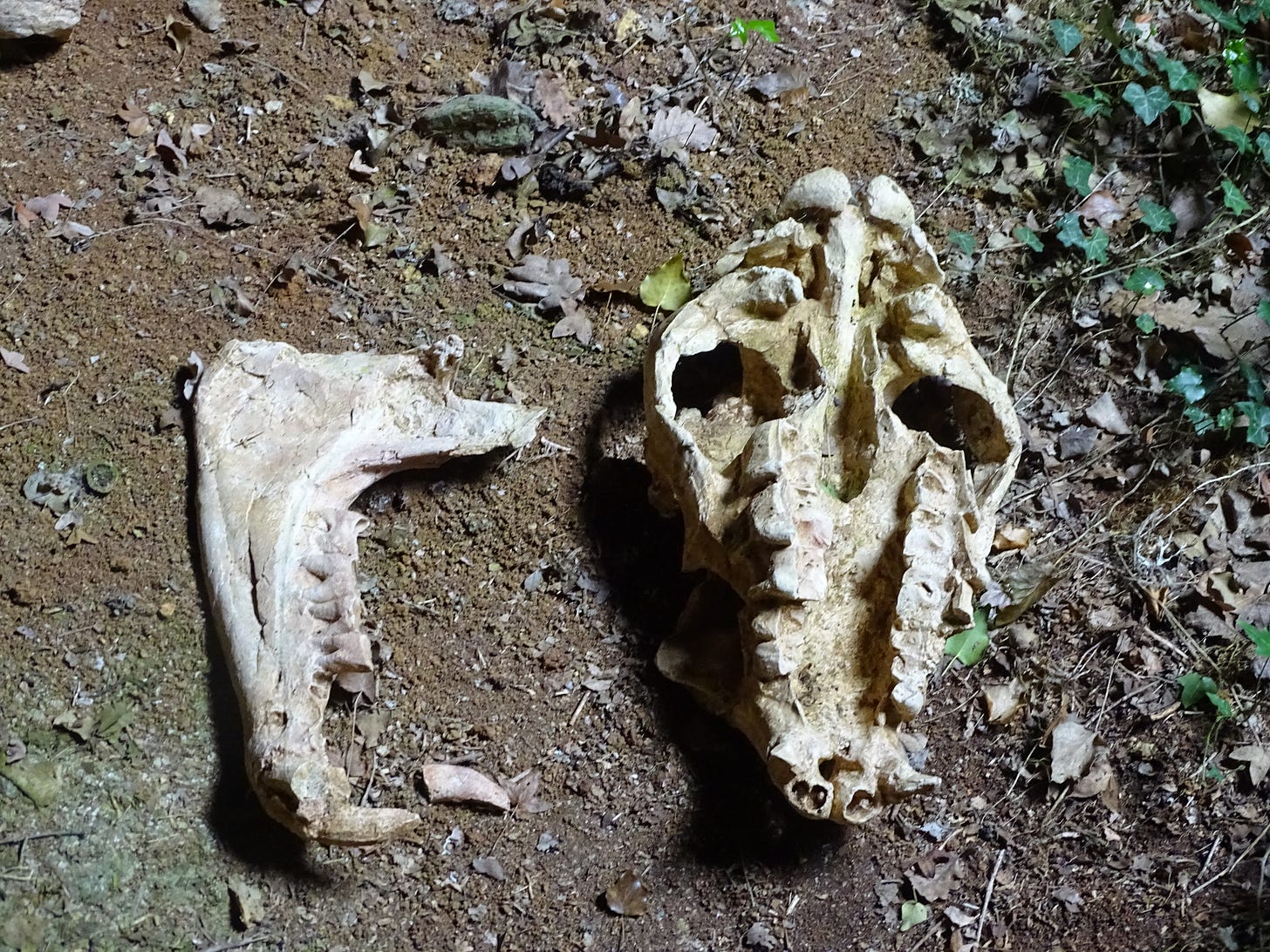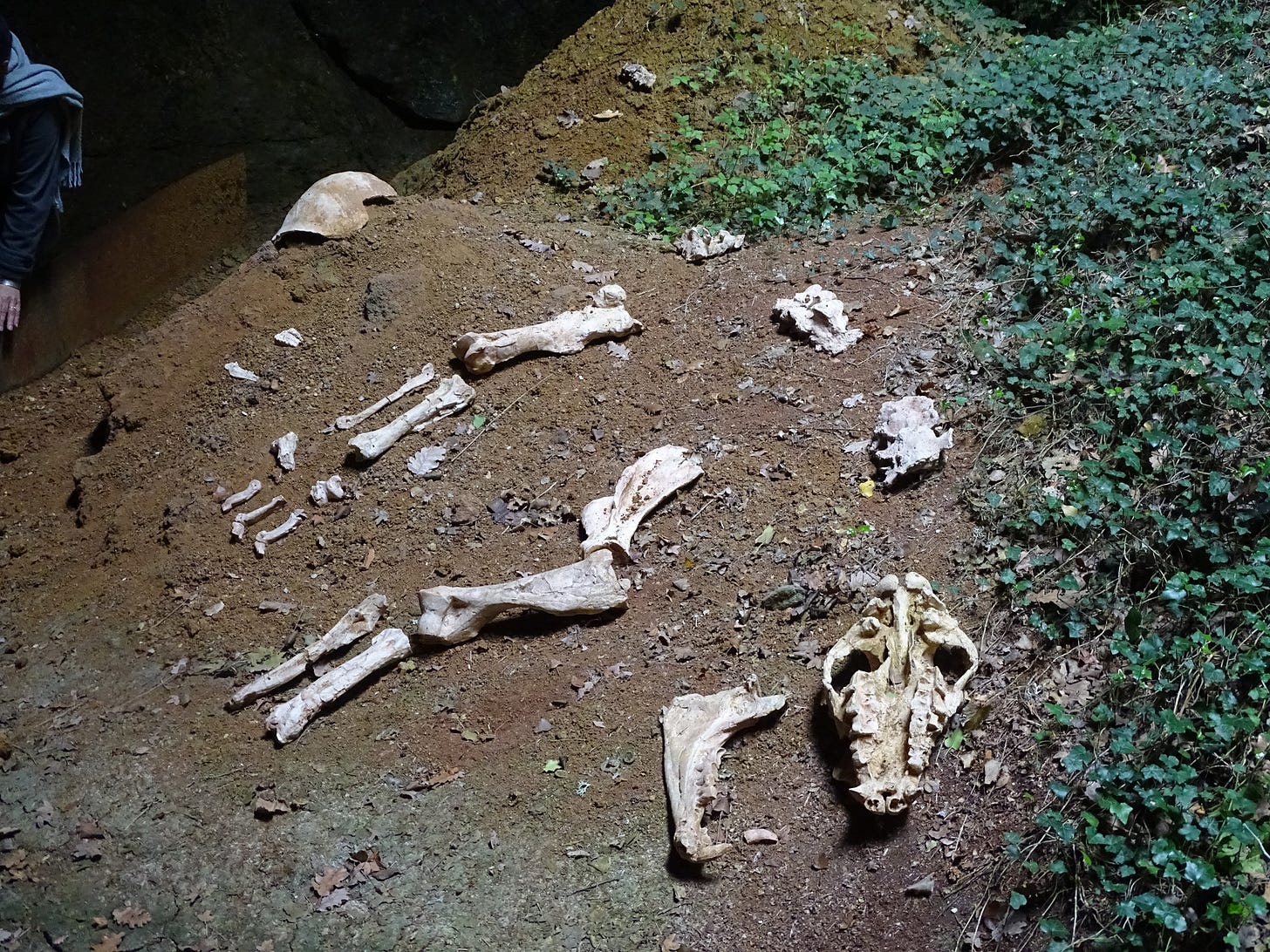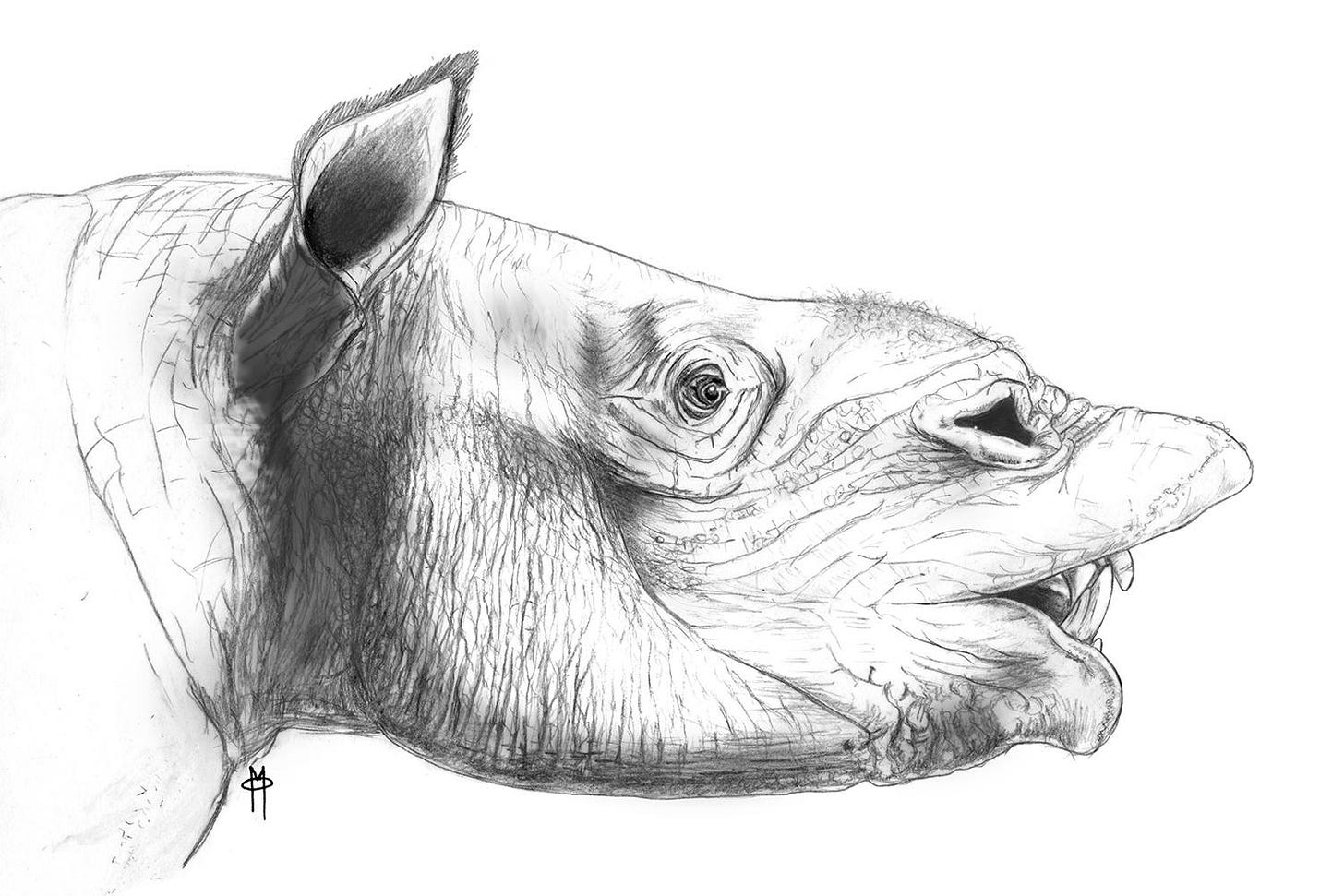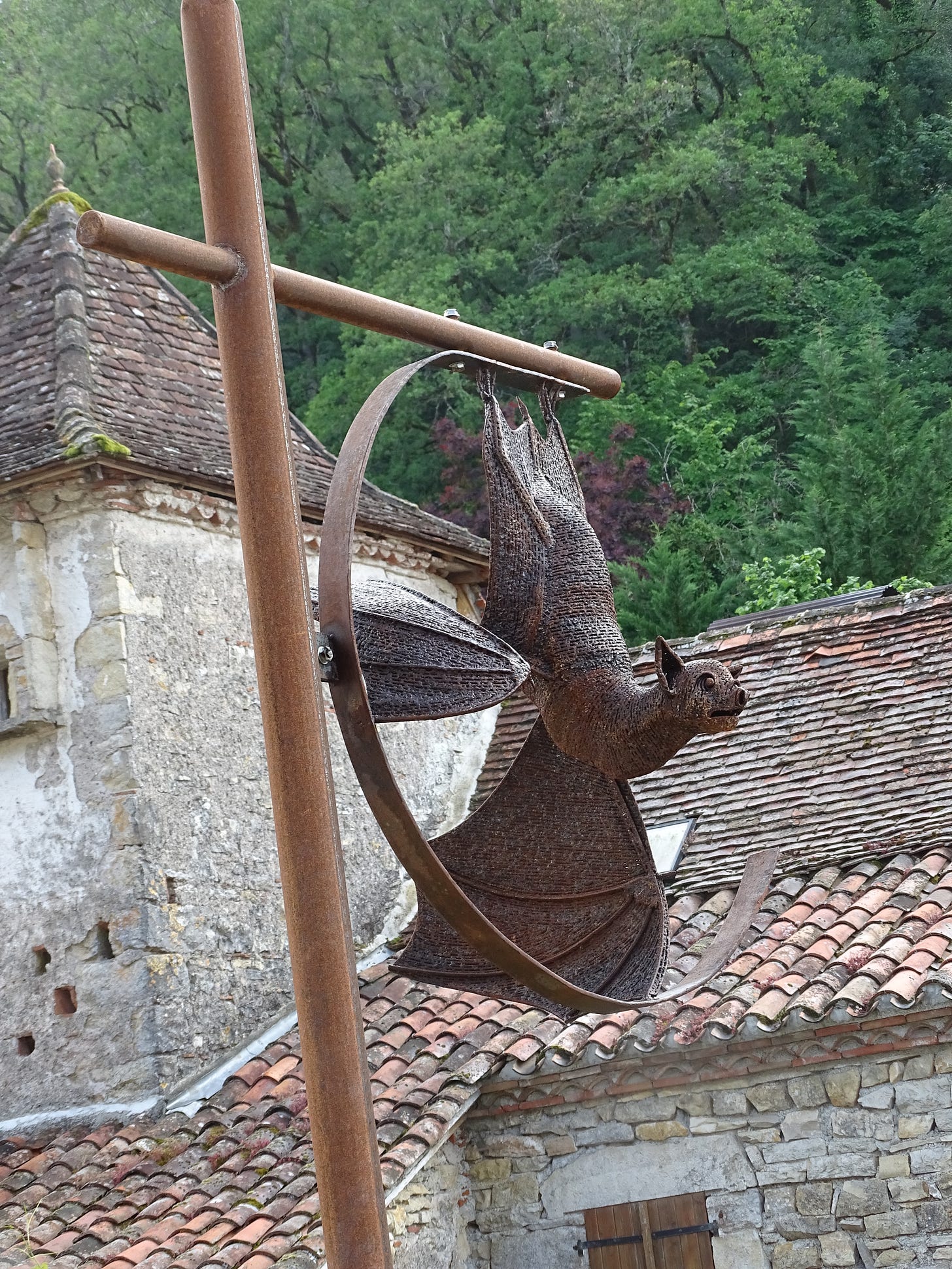Introduction: mind the gap
Of the many long-gone geological epochs of the Earth, a total period covering about 4.5 billion years, two stand out in the collective imagination and popular culture. The oldest and most preeminent must undoubtedly be the Mesozoic: the 186-million-year span of time which contains the Triassic, Jurassic and Cretaceous periods gave us dinosaurs, pterosaurs, giant marine reptiles, and other unique awe-inspiring creatures, now mostly (hi, modern sharks!) long gone. Their fossil remains may have inspired tales of dragons and giants for centuries, while more recently they captured imaginations worldwide in the mediums of writing, film, and video games. The slightly more informed will hazard a guess as to the general botanical landscape of this era, populated by tree ferns, giant horsetails, gymnosperms (such as conifers) then, later, the first flowering plants, not so dissimilar from some which can be seen today.
After a small fracas called the K-T extinction event, which 66 million years ago saw the eradication of nearly three-quarters of all life on Earth, things become quite unclear, for a while, in the collective imagination (except for those who’ve seen the BBC’s Walking With Beasts). It isn’t until the Pleistocene that our interest is piqued once more. One may envision hairy, ape-like pygmies (such as Australopithecus afarensis) lurching through the African savannah, harried by sabre-toothed cats (Machairodontinae), hyenas (Hyaenidae) or African wild dogs (Lycaon pictus). Moving forward in time a bit more, depictions abound of various hominins such as Homo erectus or Homo neanderthalis, maybe dressed in furs and wielding primitive tools, the latter ones probably busy butchering a mammoth or reindeer in a cold steppe-like locale.
This may lead the more inquisitive to wonder, what exactly happened in the 63 or so million-year gap between the catastrophic extinction of the dinosaurs and other large reptiles, and the apparition of our bipedal forebears? What animals appeared and vanished in the ages immediately following one of the largest reshufflings of Earth’s ecosystems in its history, filling many vacancies in the shattered food webs? A handful of very particular sediment deposits can give us a snapshot into the fauna and flora of this overlooked time. These are called phosphorites, the most famous of which are located in the region of Quercy, Southern France.
[Map from Pélissié et al, 2021, representing the Quercy region and the position of its phosphorites]
Phosphorus, for us
To fully understand the origin of these Cenozoic deposits, we must however travel back to the Middle Jurassic, some 170 million years ago. In those times, Southern France was covered by a warm tropical sea, which over the course of millions of years deposited multiple layers of coarse-grained carbonates and terrigenous deposits, leading to the creation of a layer of limestone 400 metres thick on average on the old seabed [1] before the sea dried up due to geological changes. During the late Cretaceous, the climate was such that this area, and especially the Quercy where important limestone deposits resided, became covered in a lush tropical rainforest. Such a humid climate is especially hostile to limestone, which is water-soluble. The result of the important rainfall was the formation of a karstic landscape, where caves, deep valleys and sinkholes were formed by the important volumes of water passing through [2]. This geological process is not unique to the Quercy region and is also known from other areas of the globe such as the Yucatan Peninsula where sinkholes are connected by networks of flooded caves [3].
Once great depressions were gouged out of the rock (the deepest reaching 100 metres), they started to rapidly fill with sediments carried by water or the wind, in a process that only took a few millennia at most. The majority of these sediments were a type of ferruginous red clay which contained nodules of phosphate ranging in diameter from a few millimetres to several centimetres [4]. At the same time as they slowly filled up the abrupt sinkholes, fauna and flora fell into them and died, before being quickly buried. Sometimes, they burrowed there themselves and were covered by sudden landslides.
[Picture from the top of the Phosphatière du Cloup d’Aural, Quercy region, France. Taken by the author.]
Once they were sufficiently filled in, these karstic depressions were covered by a layer of the local vegetation. While this afforded them some protection against erosion, the deposits were still vulnerable to changing climates. What sealed them in and ensured the survival of the fragile fossils they contained into the present day was the presence of a second layer of calcareous deposits from the late Cenozoic (28 to 23 million years ago), formed by a large lake which covered the area during part of the glacial period [5].
These conditions proved perfect for the preservation of fossils, as erosion was no longer able to threaten them. There are over 300 such phosphorite deposits just in the Quercy region, which weren’t all formed and filled in at the same time. Taken all together, they offer a series of very high-definition snapshots of life in early Cenozoic France, thanks to exceptionally well-preserved and complete fossils of animals and plants seldom seen elsewhere in the fossil record.
There’s phosphorus in them there hills
Thanks to their protective blanket of limestone, these deposits would stay largely unnoticed for most of human history. It wouldn’t be until the 19th century that these deposits would be properly recognised, after being disturbed by agricultural activity above. In 1865, the doctor Jean-André Poumarède, while visiting his brother-in-law’s farm, noticed the exceptional greenness and vigour of his wheat fields, which were situated in a small depression. After investigating, he discovered rocky nodules and bones strewn on the soil, no doubt disturbed by tilling. These would prove to be composed of up to 70-80% tricalcium phosphate. Poumarède would write to the local authorities with his findings in 1867, famously (under)stating “I have the honour of announcing that I’ve made a discovery which may have a certain importance for agriculture and palaeontology.”
This discovery led to a frenzy of short-term exploitation, as starting in 1870 hundreds of men dug through the pits to extract the slightest piece of mineral. Until 1886, close to 2000 workers were extracting 30.000 tons of phosphate minerals, worth over a million francs, per year. These were carried to nearby mills, crushed, and almost all of it was sent to England after transiting through Bordeaux. Indeed, this country had a longer history of phosphorite exploitation than France, especially in the Cambridge Greensands, and had invested heavily in the Quercy deposits. The English would sell the phosphate under the appellation “French Phosphate”, or “Bordeaux Phosphate”. By 1887, 1776 of the phosphorite diggers would be out of work and return to agriculture, as the relatively small richest karstic depressions were picked completely clean at this point [6]. Furthermore, larger and richer deposits were then found in North-Africa, diverting funding from investors and leading to the remaining deposits being left under-exploited or completely overlooked.
[Photo taken during the industrial excavation of the Raynal phosphorite. Collections of the Toulouse natural history museum]
The loss of this economic boon came at a particularly bad time, as during this period, the exotic gall-causing parasite Daktulosphaira vitifoliae was accidentally imported from North-East America to Europe. This voracious hemipteran, which attacks the roots of grape vines, caused a crisis that saw a nearly fourfold reduction in wine production in the late 19th century. This led to a rural exodus towards the cities and the abandonment of considerable stretches of land in the countryside. Because of this, the vicinity of the phosphorites were re-colonised by forest growth and they were, to a large extent, forgotten. It wouldn’t be until the sixties that scientists would return to the area, and it would take until the 1990s for local activism to shine enough of a spotlight on the area for the phosphorites to be converted into touristic and educational destinations.
It belongs in a museum
The original palaeontological study of the site happened concurrently to its industrial exploitation. Although the presence of fossils was attested from the very beginning, scientists weren’t always successful in preserving found remains. Whatever nodules and bones were exhumed were quickly ground down into powder, unless they had an unusual enough appearance, in which case they were collected by the quarry owners and sold to palaeontologists sent to negotiate on behalf of the country’s major museums and collectors. This means that none of the fossils from the “ancient collections” were collected in person by the actual scientists who described them, so that they lack a precise origin and any stratigraphic data which could be used to properly date them. This means the original view of these sites was one of extremely heterogeneous populations, as the surviving remains were mislabelled and lumped together haphazardly.
The first systematic excavations were be carried out starting in 1965 by teams from the universities of Paris and Montpellier. By sieving through piles of mining detritus, scouring the bottom of the excavated pits, and uncovering overlooked deposits, this new generation of scientists was able to accurately date the phosphorites and in some cases assign a specific fauna and flora to them, in such a fashion that they could determine the exact composition of the local species populations, their morphological variation, and the climate at the time for individual, and intact enough, phosphorites. The conditions for preservation in the intact deposits were such that even the most fragile pieces, such as the skulls of micromammals, were kept intact without any crushing whatsoever, allowing for rare functional anatomy studies to be carried out on these species [7].
[Skull of an Adapis primate dated to 40 million years found in the Cloup d’Aural phosphorites. From http://phosphatieres.com/]
Since then, their tireless work has uncovered several million individual specimens (though to be fair this includes fragmented and unnumbered elements which may only measure a few millimetres, the quantity of numbered elements is slightly over 100,000) spread over a period going from 52 to 19 million years ago (covering the Eocene and Oligocene). The collection includes 700 species of vertebrates, 500 of which are mammals, and numerous unusual specimens such as insects and their puparia, raptor dejection pellets and reptilian and amphibian squamate mummies (3D skin imprints). Most tantalizingly, the presence of identifiable plant matter fossils was first reported in 2006 in a short study that we’ll look at later on.
Welcome to Eocene Park
Now that all that boring (but oh-so-necessary) part about geology and history is behind us, let’s take a closer look at what the Phosphorites reveal about the ecosystems of France tens of millions of years ago. Unfortunately a majority of the documentation on these extraordinary sites is dated, unavailable, or just plain impenetrable to non-paleontologists, although I’ve tried to get the latest versions of papers when possible. As a result, this will mostly be a highlight of the most interesting fauna (based on several subjective criteria relating to their appearance, how exotic they are compared to today’s European fauna and their ecological role).
This section will be cut in two (no pun intended) by a major event, the Grande Coupure (“great cutoff”), one of the most recent extinction events in Earth’s history, which caused a major reshuffling in the vertebrate fauna of Europe. This event took place at the transition period between the Eocene and Oligocene, around 33.9 million years ago, and so is perfectly documented by the Quercy phosphorites which are known to contain deposits spanning from 52 to 19 million years ago.
In the most ancient deposits, dating from the Eocene, we see in Europe an archaic fauna mixing the old with the new: bats, frogs, early ungulates, and rodents mix with marsupials, primates, armored lizards, and crocodiles. At this time, the Atlantic passage that connected the Americas to Europe via Greenland and Scotland had been cut off by rising sea levels for millions of years, leading to high levels of endemism in the tropical archipelago of Europe and especially the South-Eastern “Balkanatolian” region.
[map of Eocene Europe including the Turgai strait, Vasilyian D, 2018. DOI: https://doi.org/10.7717/peerj.5511/fig-6 + timescale of the age of various phosphorites from Legendre et al 1997.]
We’ll start off with two groups that fared far better across time, and during the Grande Coupure, than the rest of this list. Frogs proved to be surprisingly resilient as many families represented in the fossil record still have extant members living in exactly the same areas of Europe and France since the Eocene, proving they are far more adaptable than often given credit for. This includes the genus Pelodytes, the spade-foot frogs, the Ranoidea, whose cousins the Ranidae are some of the most common amphibians in Western Europe (such as Rana temporaria), but also a few clunkers like Thaumastosaurus who may be related to an African endemic genus of frogs but overall didn’t amount to much in the grand scheme of things. Regarding frogs (but also reptiles), the Phosphorites are especially famous for producing “mummies” of near perfectly intact individuals, including soft internal organs, right down to their eyeballs. Such finds are nearly unique in the world. [8]
[image of phosphorite mummies from Pelissie et al 2021]
Next up are bats, of the order Chiroptera, a fascinating phylum. While their nocturnal lifestyle makes them largely unnoticed in Europe, they are in fact one of the most evolutionarily successful clades of mammals to date, comprising close to 20% of all mammalian species. Their wings also gave them the ability to colonise distant locales where other mammals couldn’t always reach, such as islands. They’ve occupied numerous ecological niches overtime, either as frugivores, pollinators (the technical term in their case being nectarivores) or as insectivores. All the remaining bats living in Europe today chose the latter lifestyle.
In the latest complete Eocene species list of the mammals found in the deposits (1981), there are 20 species of chiropterans, spread out across 3 superfamilies. Two of those, the Vespertilionoidea and Rhinolophoidea, are still present in Europe today. These are small to medium sized, cave-dwelling or tree-cavity-dwelling, insectivores. Their voracious appetite and peerless aerial hunting abilities make them useful for pest-control within a horticultural or agricultural context. Meanwhile, a small third group, Emballonuroidea, disappeared from Europe in the interval, having a strictly tropical and subtropical distribution nowadays.
Another strange Eocene group is the now totally extinct Nyctitheriidae. Originally mistaken for bats themselves, based on fragmentary jaw fossils, they were later found to be more closely related anatomically to the Eulipotyphla (shrews, hedgehogs, moles). Reconstructions place their physical appearance closer to that of the Solenodons, strange animals whose only two extant species live on the islands of Hispaniola and Cuba.
[illustration of Solenodon, from Turni et al. 2007]
We also have primitive carnivores, the Creodonta, who looked somewhat like our modern carnivores, ate like our modern carnivores, but were only cousins, and not ancestors, of our modern carnivores. They peaked in diversity during the Eocene before slowly dwindling away. The two main theories for this are that they couldn’t cope with the changes in climate and ecology which followed the Grande Coupure event, or else they were outcompeted by the upstart carnivorans (or a little bit of both).
A few of the earliest “Carnivoramorphs”, extinct groups not directly linked to today’s carnivores, are also found in Europe at this time: such as the Viverravidae and Miacidae, both possessing elongated bodies and long snouts which would look quite similar to members of the ferret or viverrid family (the latter of which is tropical only). Moving on into the true carnivores we only have a handful of species, mainly Cynodictis (somewhat like a cross between a dog, a thylacine and a puma) and the species Simamphicyon helveticus, part of a family (Amphicyonidae) colloquially known as “bear-dogs”, this extremely successful group (in its time) spread to most of the world and filled ecological niches as varied as those of bears, wolves or foxes [9].
[Creodonta illustration from https://nixillustration.com/science-illustration/2022/it-came-from-the-wastebasket-08-creodonts/ + Amphicyon from https://www.nationalgeographic.com/science/article/carnivorous-neighbors-how-sabercats-and-a-bear-dog-managed-to-coexist + Miacis illustration from https://www.britannica.com/animal/Miacis]
There were also a few early primates kicking around at the time such as the Adapidae, an Eocene family of animals with long snouts which may have looked somewhat like lemurs or loris. The males were far larger than the females and could have prominent sagittal crests, hinting at a harem-like polygynous system, while their diet was probably mainly composed of foliage. Alongside them lived Tarsiidae monkeys, finally a group that still exists nowadays (even if only in the tropics), the “bush babies”. These large eyed, pygmy primates are strict carnivores, subsisting mainly on a diet of insects and occasionally small vertebrates.
[Illustration of Adapis from Sellers, 2000 + Photo of Tarsius syrichta from the Bohol region of the Philipinnes by Marc Ameels]
As for rodents, they are by far the largest part of the list, mixing a majority of extinct groups such as the Ischyromyidae, Remyinae or Theridomyinae with one extant group still living in Europe today: the Gliridae (dormice), who appeared during this Eocene period. These generally small mammals are known today for their long hibernation periods. Depending on the species their diets are a bit all over the place.
We finally reach the ungulates. The most basal group is the Palaeodonta, which is considered to be allied to the Suiformes (related to modern day pigs). These animals had small, generalist bodies with 4 toes per foot and could be most closely compared in appearance to perhaps the muntjac although some of them also had tails, and various groups were still divided into herbivore and omnivore members. The Ancodonta were more of the same, although within them a sub-family of herbivores somewhat related to camels was present, the Anoplotheriidae. While these latter animals were somewhat larger, we’re still far from the megafauna of the Pleistocene.
[Anoploterium commune illustration by Christopher Chávez at https://khriskath.artstation.com/projects/mzzwQ8]
Half a dozen species of Tylopodans were present, the actual group that today includes camels, although it’s the extinct family Xiphodontidae, who do look distinctly camel-like, but would not survive the Grande Coupure event. Along with them were a few members of the family Amphimerycidae (now extinct too) which contains ancestors or close relations to most modern grazers we’re familiar with today: all the deers, giraffes, bovids etc.
A significant part of the ungulate fauna of this time in Europe was the Palaeotheriidae, a group closely related to modern horses. It’s believed in this time these small animals lived in the forested areas and fed off a mixture of fruit and foliage. The okapi, even if it’s a relative of giraffes, may be the best approximation of the ecological niche occupied by these ancient herbivores.
[Palaeotheriidae illustration Hellmund et al 2005]
As for everyone’s favourite animals (don’t you dare say otherwise), birds, Europe had a rich collection of them back then, including several families which are now only found in the tropics, or went extinct. For example, parrots (Psittacidae), frogmouths/pootoos (Podargidea), secretary birds (Sagittariidae) and perhaps most significantly, members of the Phorusrhacidae, relatives of the awesome terrorbirds of South America (this lead to a revision of their biogeographic history, as their presence on the two separate continents means they may have differentiated from a Rallidae ancestor at some point during the existence of the Gondwanan supercontinent). Besides those, many familiar groups were already present on the continent at this time including but not limited to Phalacrocoracidae (cormorants), Accipitridae (non-falcon raptors), Falconidae (falcons), Strigidae (owls), Ardeidae (herons), Laridae (gulls), or even Cuculidae (cuckoos). [10]
[Map of the localisation of bird families which were present in Europe during the Eocene-Oligocene and now are only found outside of Europe, or extinct, Mourer-Chauviré et al 1982]
Quickly glossing over a few other animal groups: alligators of the Arambourgia genus (not too big, not too small, pretty average-sized), turtles such as Testudo phosphoritarum (Testudo being a genus that’s still present in France to this day), a whole host of lizards (iguanas, gekkos, wall-lizards) and snakes (such as Eoanilius europae, a cousin of the South American pipe snake Anilius scytale) [11], the Leptictida, extinct medium-sized mammals with kangaroo-like legs, Didelphidae (oppossums) marsupials which completely disappeared from Eurasia since then but subsist in the Americas, the Apatotherians, one of the oldest clades of placental mammals, believed to be small insectivores. Finally, a clade of relatively rare animals was found right up until the early Oligocene, called Pseudorhyncocyon, an extinct clade of insectivores physiologically quite similar to the elephant-shrews of Africa, small animals with long jumpy legs and flexible snouts, except it was several times larger. [12]
[Illustration of Rhyncocyon petersi from Philadelphia zoo by Joey Makalintal, 2008]
All these happy mammals had a good thing going, until 33.9 million years BC. A culmination of geological, climatic and possible astronomical phenomena lead to the icing-over of Antarctica because of the transition from a “greenhouse” tropical Earth to an “icehouse” planet with frozen poles, which in turn eventually resulted in a lowering of sea levels and the drying up of the Turgai strait which separated Europe and Asia at the time. As if that wasn’t enough, a major asteroid impact (the Popigai asteroid) may have aggravated (or even caused) some of these climatic changes. Besides a change in climate which transformed Europe from an evergreen subtropical environment to a dryer and cooler climate with more areas of open vegetation instead of forest, the continent was colonized by many new families of mammals who crossed over from Asia freely now that Turgai was no more, and even some American families got in on the action. While the names of many of the mammals above are unfamiliar, and they left no descendants in the modern day fauna of the continent, this wouldn’t be the case for the many newcomers whose descendants populate the world to this day. That should tell you who had the upper hand in this free exchange of populations.
[Illustration of climate change and the Grande Coupure’s effects on mammal biodiversity from Pelissie et al 2021]
After the Grande Coupure, we find a single paper treating of a topic near and dear to my heart. It’s, as far as I’m aware, the only one who studied the fossilized remains of plants within one Phosphorite deposit to determine its floral landscape. This was done on a deposit from the lower Oligocene. In this time, palm trees (the Arecaceae family) could be found in this area of Southern France, evincing at least a Mediterranean if not subtropical climate. One of the most widespread dicot families was Anacardiaceae, which contains many plants with toxic or irritating compounds in their tissues but also plants with edible elements like cashews (Anacardium), pistachio (Pistacia) and sumac (Rhus). Most of these plants are also subtropical and tropical, although some Pistacia are present in southern Europe (most notably Pistacia terebinthus, which was harvested for turpentine in the past). The fossilized fruits that were recovered corresponded to the genus Pentoperculum and had the peculiarity of having five holes (hence the Latin name) for the seeds to escape from. A surprise find was numerous seeds of the genus Vitis, the same one as grape vine (Vitis vinifera). Unlike the other finds, Vitis is a genus mostly found in temperate to Mediterranean climates, with only a few species adapted to subtropical and tropical environments. This could confirm a transition was in place to a cooler climate than the Eocene one, or else if the climate was still tropical, these plants may have managed to adapt to it [13].
[Photo illustrations of seeds of Pentoperculum Anacardiaceae (top) and Vitis Vitaceae (bottom) along with transversal cuts in fossilised stem material, from De Franceschi et al 2006]
In the early Oligocene that followed, Europe’s evergreen subtropical forests were replaced by deciduous forests, as marked seasonality began to appear, making evergreen trees less suited to the environment (temperate climates do of course have evergreen angiosperms, but most of these take the forum of shrubs rather than full-grown trees, for example holly Ilex aquifolium). Open areas also arose that favoured some groups of ruminant ungulates that came over from other continents, especially Asia where such open grassland areas had already developed, giving the fauna a head-start on the Europeans. [14]
With regards to birds, we see a transition from the fossil assembly being dominated by members of the Aegialornithidae (a family of Eocene birds whose morphology was somewhat similar to that of modern day swifts, Apodidae, with sickle shaped wings, although lacking the extreme perpetually flying lifestyle. Their closest analogues are believed to be the tree-swifts, Hemiprocnidae) to one containing more Archaeotrogonidae, a group which was recently classified by phylogenetic analyses as being sisters to the Caprimulgidae, the strange-looking nightjars. While swift and swallow-like birds are best known for nesting on cliff-faces, sandy river banks or the emergent canopy of virgin forests, far from predators, the Caprimulgidae of today are mostly open-country birds preferring heathland, moors, grasslands and other such habitats with only sparse tree or shrub cover. If these ancient groups already possessed the traits and predilections of their descendants/cousins, could this be another clue pointing to the transition from an evergreen rainforest to open grassland in the region over the course of the Oligocene? Furthermore, in the early archives of the Phosphorites that these observations are drawn from (1982), there are no confirmed finds of Passeriformes, the perching birds or song birds, despite these composing a vast majority of the bird species known today, at least in Eurasia. It seems that non passerine clades which were very common and widespread in the early Cenozoic (Trogonidae, Todidae, Podargidae etc) found themselves ousted by the explosive radiation of this remarkable group, pushing them them into far more restricted geographical ranges.
[Photo of a couple of crested tree-swifts Hemiprocne coronata by Ngoc Sam Thuong Dang and of European nightjar Caprimulgus europaeus by David Verdonck]
Within Ungulates, some major reshuffling took place, with extinctions of several major lineages and the apparition of others, but if we’re honest they still all end up looking like generalist mammals the size of baby deers. This is shown by a major diversification in the Cainotheriidae who fit this general body plan. During this transition period of the early Oligocene we see the general diet of artiodactyls (as indicated by dental structure) switch from mixed frugivorous and folivorous (leaf-eating) towards a fully folivorous diet.
This is also the point where the ruminants start muscling in on the turf of the primitive artiodactyls in Europe. Ruminantia is of course the dominant herbivore group of the 21st century, which spoils a bit how this fight between the lineages will end. Overall, every Perissodactyl found in Europe after the Oligocene can simply be considered to be an outside coloniser who moved over the newly formed land passages (with the exception of the deer-sized Plagiolophus minor, an early Eocene relic).
The first Rhinocerotidae (members of the same family as rhinoceroses, obviously) also colonise Europe, culminating with 5 genuses being present in South-Western France during the late Oligocene-early Miocene period (Diaceratherium, Mesaceratherium, Pleuroceros, and Protaceratherium). The always impressive Chalicoteriiidae, giant semi-bipedal herbivores who fed on elevated foliage, are cousins of these Rhinocerotidae and appear in fossil records during this time. This also brings us to Cadurcotherium cayluxi, the mascots of the Phosphorite deposits. These large, cow-sized ungulates are also related to rhinos although their morphology is closer to that of the tapir, complete with a snout, and they were equipped with enlarged canines which (it’s believed) served the same function as those of boars and other such modern porcine animals. [15]
[Copy of a Cadurcotherium skeleton as it was found by the phosphorite miners in the 19th century, Cloup d’Aural phosphorites. Both photos by the author + reconstruction sketch of said Cadurcotherium by the Cloup d’Aural Phosphorites & Maeva Orliac]
As for carnivores, the Oligocene will see several dozen species succeeding one another (although some tended more towards omnivorous), ranging from animals with the size and general body plan of a weasel (Mustelictis olivieri) to animals that would be familiar to us as apex predators such as Dinailurictis bonali, a Feliformian, who had both the size and general physiognomy of a tiger. Several species of Hyaenadonta, who annoyingly despite their name are not closely related to hyenas, were also present at the time to complement this fearsome roster. [16]
Conclusion:
I hope you’ve enjoyed this 52 million year trip through Southern France, to discover a major disruption that laid the foundations for some of the great dynasties of vertebrates we coexist with in the modern day. These deposits are still studied every year by international groups of palaeontologists, although they seem terribly dead-set on only publishing in French if possible or keeping their data to themselves, it was a hell of a lot of work to dig up this stuff. I’m really not much of a mammal guy, let alone a Paleogene mammal guy, so I hope this overview has been enough to give you an idea of where evolution was trending during these crucial few million years in the late Eocene/early Oligocene.
As a fun final anecdote, to capitalise on the touristic potential of the Phosphorites, the region’s local authorities commissioned in nine cities giant statues of one animal named after that city. Here’s the Oligocene Rhinolophidae bat Vaylantsia cregolensis (very much not to scale), from the village of Cregols. Can you catch them all on your next visit?
[Picture of the Vaylantsia cregolensis of Cregols, taken by the author]
References:
[1] Bastianini L et al. 2017. Sedimentary characterization of the carbonate source rock of upper Kimmeridgian Parnac formation of the Aquitaine basin (Quercy area). Bull. Soc. Geol. Fr. (2017)
[2] Valois et al. 2011. Assessment of doline geometry using geophysics on the Quercy plateau karst (South France). Earth surf. Process. Landforms 36. 1183-1192.
[3] Platt N, Wright V. 2022. Flooding of a carbonate platform: The Sian Kaʼan Wetlands, Yucatán, Mexico—A model for the formation and evolution of palustrine carbonate factories around the modern Caribbean Sea and in the depositional record. Depositional Rec. 9. 99-151.
[4] Jean Guy Astruc, Gilles Escarguel, Bernard Maranda, Régine Simon-Coinçon & Bernard Sigé (2000) Floor-age constraining of a tectonic paroxysm of the Pyrenean orogen. Late Middle Eocene mammal age of a faulted karstic filling of the Quercy phosphorites, south-western France, Geodinamica Acta, 13:5, 271-280, DOI: 10.1080/09853111.2000.11105374
[5] Conseil d’Architecture, d’Urbanisme et de L’environnement (CAUE) 1997. Les sous-entités paysagères 3 – le Quercy blanc.
[6] Geze B, 1994. La ruée vers le phosphate dans les cavernes du Midi de la France. Travaux du comité français d’histoire de la géologie – troisième série – T.VIII.
[7] Legendre S, Sigé B, Astruc J-G, de Bonis L, Crochet J-Y, Denys C, Godinot M, Hartenberger J-L, Lévêque F, Marandat B, Mourer-Chauviré C, Rage J-C, Rémy J-A, Sudre J & Vianey-Liaud M. 1997. Les phosphorites du Quercy : 30 ans de recherche. Bilans et perspectives. GEOBIOS, M.S. n°20. 331-345.
[8] Crochet J-Y, Hartenberger J-L, Rage J-C, Rémy J-A, Sigé B, Sudre J, Vianey-Liaud M. 1981. Les nouvelles faunes de vertébrés antérieurs à la « Grande Coupure » découverts dans les phosphorites du Quercy. Bull. Mus. Natn. Hist. Nat. Paris, 4ème série, 3, Section C, n°3 : 245-266.
[9] Tomiya S, Tseng Z-J. 2016. Whence the beardogs? Reappraisal of the Middle to Late Eocene ‘Miacis’ from Texas, USA, and the origin of Amphicyonidae (Mammalia, Carnivora). R. Soc. open sci.3160518.
[10] Mourer-Chauviré C. 1982. Les oiseaux fossiles des phosphorites du Quercy (Eocène supérieur à Oligocène supérieur) : implications paléobiogéographiques. Geobios. Mémoire spécial 6. p. 413-426.
[11] Rage J-C. 2006. THE LOWER VERTEBRATES FROM THE EOCENE AND OLIGOCENE OF THE PHOSPHORITES DU QUERCY (FRANCE): AN OVERVIEW. Strata. Série 1. Vol. 13. p.161-173
[12] Sigé B. 1974. Pseudorhynchocyon cayluxi Filhol, 1892, insectivore géant des phosphorites du Quercy. Palaeovertebrata. Vol. 6.
[13] D. DE FRANCESCHI, C. LE GALL, G. ESCARGUEL, M. HUGUENEY, S. LEGENDRE, R. SIMON-COINÇON, TH. PELISSIE & B. SIGE : Une paléoflore des phosphatières du Quercy (Sud Ouest France) : première découverte, résultats et perspectives. Strata. Série 1. Vol. 13. p.97-101.
[14] Blondel C. 2000. The Eocene + Oligocene ungulates from Western Europe and their environment. Palaeogeography, Palaeoclimatology, Palaeoecology 168. 125±139.
[15] Scherler L, Mennecart B, Hiard F, Becker D. 2013. Evolutionary history of hoofed mammals during the Oligocene–Miocene transition in Western Europe. Swiss J. Geosci. 106:349-369.
[16] De Bonis L, Gardin A, Blondel C. 2019. Carnivora from the early Oligocene of the ‘Phosphorites du Quercy’ in southwestern France. Geodiversitas. 41(15): 601-621.
Extra references for the figures (not in order):
Vasilyan D. 2018. Eocene Western European endemic genus Thaumastosaurus: new insights into the question “Are the Ranidae known prior to the Oligocene?”. PeerJ 6:e5511
Pelissié T, Orliac MJ, Antoine P-O, Blot V & Escarguel G. 2021. Beyond Eocene and Oligocene epochs: The Causses Du Quercy Geopark and the Grande Coupure. Geoconservation Research. 4(2). doi: 10.30486/gcr.2021.1913051.1050
Turni H, Hutterer R, Asher R. 2007. Type specimens of “insectivoran” mammals at the Museum für Naturkunde, Berlin. Zootaxa 1470. n° 1-10.
Hellmund M. 2005. A three-dimensional skeletal reconstruction of the Middle Eocene Propalaeotherium hassiacum HAUPT 1925 (Equidae, Perissodactyla, Mammalia) and a modern synoptic painting of some individuals within their habitat. Current Research in Vertebrate Palaeontolgy 3rd Annual Meeting of the European Association of Vertebrate Palaeontologists (EAVP).
Sellers, B. (2000). Primate Evolution.




